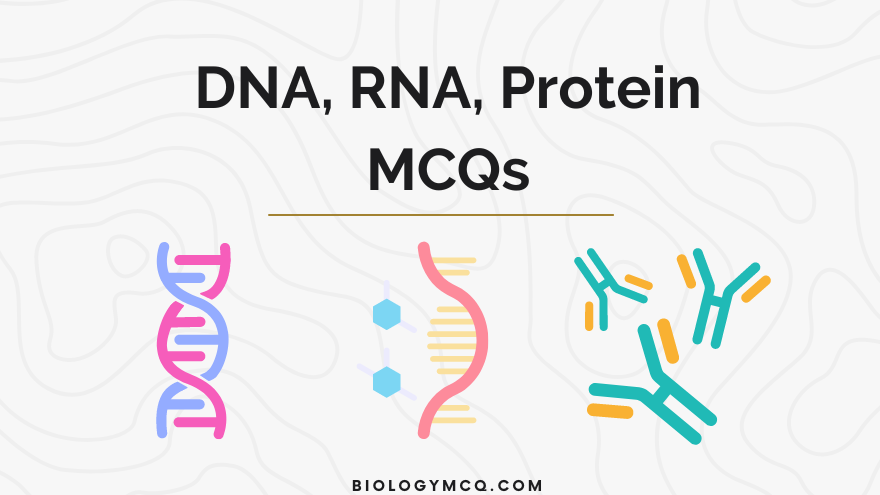Study and Learn with 1000s of Biology MCQs
DNA, RNA, Protein MCQs

DNA, RNA, Protein MCQs (multiple-choice questions) cover topics such as the machinery involved, regulatory elements, transcription factors, and the overall process.
Whether you’re studying for an exam or seeking to deepen your understanding of gene expression, these MCQs offer valuable learning opportunities for students and enthusiasts alike.
Let’s explore the MCQs below and enhance your comprehension of molecular genetics!
MCQ on DNA, RNA, Protein
Cells use _ to copy the information in DNA into RNA molecules
transcription
translation
Recession
None of these
transcription
Cells use _ to build proteins from the information carried in mRNA molecules
transcription
translation
Recession
None of these
translation
if the cells in your pancreas couldn’t make the protein _, you’d have diabetes
Glucagon
collagen
insulin
keratin
insulin
- DNA (Deoxyribonucleic Acid): DNA is a molecule that carries genetic instructions for the development, functioning, growth, and reproduction of all known living organisms and many viruses. It consists of two long strands forming a double helix, composed of nucleotides containing a sugar-phosphate backbone and nitrogenous bases (adenine, thymine, cytosine, and guanine).
- RNA (Ribonucleic Acid): RNA is a molecule essential for various biological roles in coding, decoding, regulation, and expression of genes. It is single-stranded and typically consists of four nucleotides: adenine, cytosine, guanine, and uracil. RNA molecules are involved in protein synthesis, gene regulation, and other cellular processes.
- Protein: Proteins are large, complex molecules made up of amino acids joined together by peptide bonds. They play critical roles in the structure, function, and regulation of the body’s tissues and organs. Proteins are involved in various biological processes such as enzymatic catalysis, cell signaling, immune response, and structural support.
Humans are most closely related to chimpanzees; our DNA sequences are about _ percent identical
91
97
85
99.3
97
the current line of thinking is that there was an apelike species alive _ years ago that branched into a line of gorillas around 7 million years ago
1 to 10 million
100 to 200 billion
10 to 20 million
None of these
10 to 20 million
_ figured out how a code could be captured in the structure of DNA molecules
James Watson and Francis Crick
Van leewenhook
Schleiden
Shwann
James Watson and Francis Crick
__ proposed that DNA is made of two nucleotide chains running in opposite directions and held together by hydrogen bonds between the nitrogenous bases
Van leewenhook
Schleiden
James Watson and Francis Crick
Shwann
James Watson and Francis Crick



